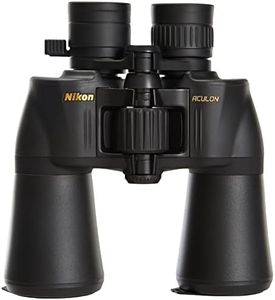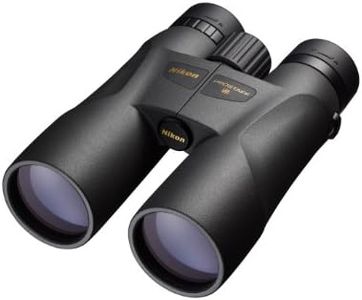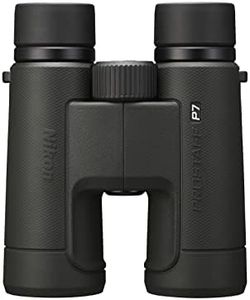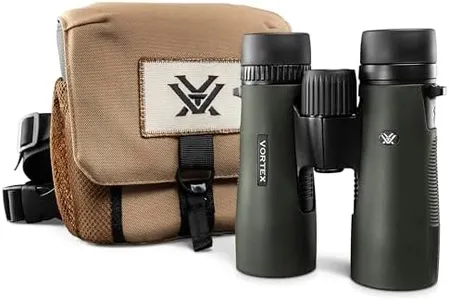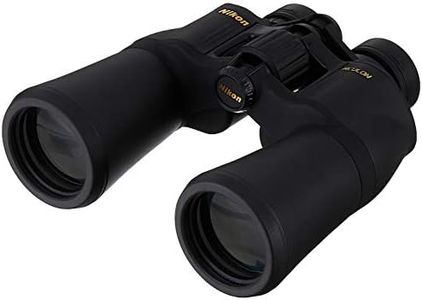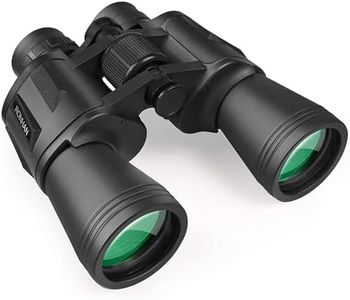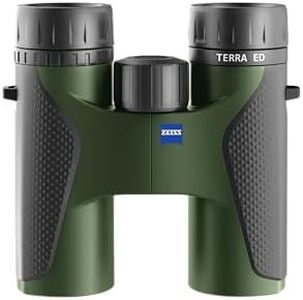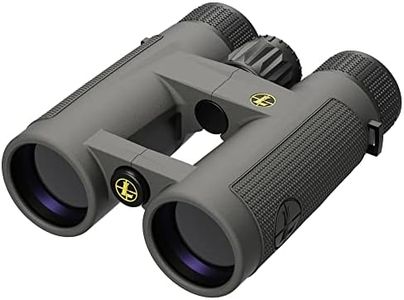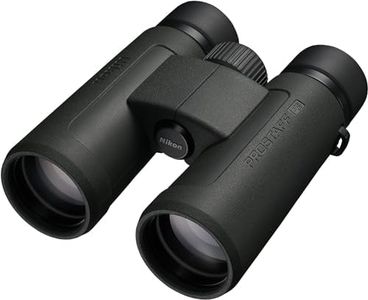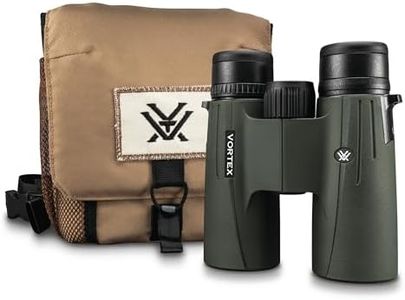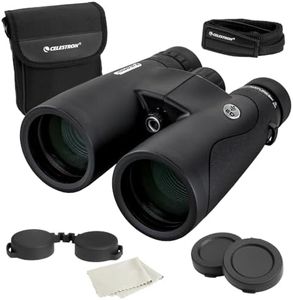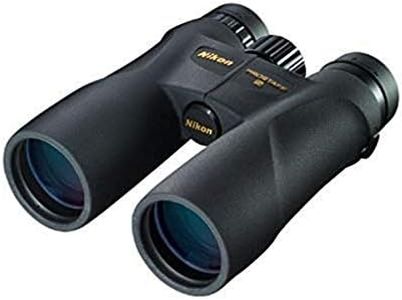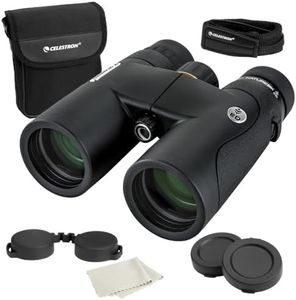We Use CookiesWe use cookies to enhance the security, performance,
functionality and for analytical and promotional activities. By continuing to browse this site you
are agreeing to our privacy policy
10 Best Birding Binoculars
From leading brands and best sellers available on the web.Buying Guide for the Best Birding Binoculars
Choosing binoculars for birding can be a very rewarding process if you know what features to look for. The right pair of binoculars will help you see birds more clearly, observe their details, and enjoy birdwatching to the fullest. To get the best fit, focus on the balance between image clarity, comfort, and ease of use, always thinking about your typical birding environments and how you'll carry or use the binoculars.MagnificationMagnification describes how much closer an object appears compared to the naked eye. For birding, magnifications like 8x or 10x are most common. Lower magnifications, such as 8x, provide a wider field of view and are often easier to keep steady, making them great for tracking moving birds. Higher magnification, like 10x, brings the bird closer but can be harder to stabilize and offers a slightly narrower field of view. Choose a magnification that fits your birding habits: if you like quickly spotting birds in dense areas, 8x may be better. If you regularly view birds at longer distances, 10x might suit you more.
Objective Lens DiameterThe objective lens diameter (the number after the 'x', like the 42 in 8x42) is the size of the front lenses in millimeters. A larger diameter lets more light in, making the image brighter and clearer, especially in low light (like dawn or dusk). Common sizes for birding are 32mm to 42mm. 32mm is lighter and more compact for easy carrying, while 42mm gives you better brightness for early or late outings. Pick a lens size based on when and where you watch birds, and whether you prefer compactness or image quality.
Field of ViewField of view refers to how wide an area you can see through the binoculars, usually stated in feet at 1,000 yards or in degrees. A wider field of view helps you find and follow birds more easily, particularly fast or unpredictable species. Generally, 8x binoculars feature a wider field of view than 10x. If you mainly watch quick-moving or flock birds, a wide field may be key for you.
Weight and SizeWeight and size matter because birding often means carrying your binoculars for extended periods. Lighter and more compact binoculars are easier to carry, especially on long walks or hikes, but sometimes compromise slightly on brightness or image stability. If comfort and portability are crucial to you, especially if you go birding often or for long stretches, lean towards lighter models.
Close Focus DistanceClose focus is the shortest distance at which the binoculars can clearly focus on an object. This is important if you like to watch birds (or butterflies, etc.) up close, such as at feeders or in gardens. Typical close focus distances range from under 6 feet to over 15 feet. If observing nearby wildlife is a regular part of your outings, look for a pair with a close focus of around 6-8 feet.
Eye ReliefEye relief indicates how far your eyes can be from the eyepiece while still seeing the whole field of view. This is particularly important if you wear glasses; longer eye relief (15mm and up) lets you see comfortably without taking your glasses off. If you use glasses, seek models with adjustable eyecups and at least 15-17mm of eye relief.
Weather ResistanceBirdwatching often means being outdoors in unpredictable weather. Binoculars with waterproof and fog-proof designs protect the internal optics from rain and humidity, keeping your view clear in damp conditions. If you expect to birdwatch in wet or varying climates, opt for models labeled as waterproof and fog-resistant.
